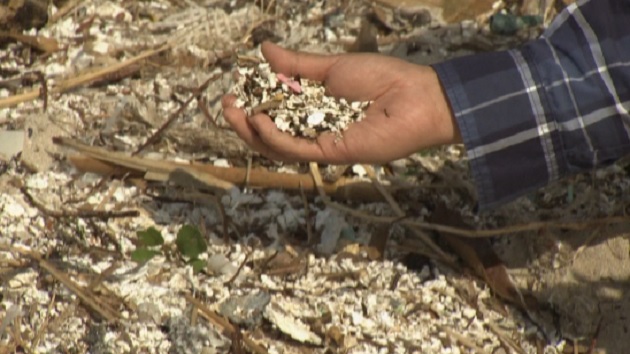
Microplastic pollution in local waters is causing greater concern.
Risks of serious health complications to both humans and marine animals have been correlated to the plastic debris, and the local community is voicing a need for stronger measures aimed at reducing them on the island.
Mike Laidman reports.
Report
(서우봉) Seoubong Beach in (함덕) Hamdeok is one of Jeju island’s most recognisable beaches, but take a closer look, and you can easily see the tiny pieces of trash that litter the once-pristine sand.
It is mostly debris from styrofoam buoys that has washed onto the beach.
Over time, the garbage breaks into smaller and smaller pieces, finally becoming microplastics, harming the marine ecosystem.
As the sand here is scooped up, tiny plastic flecks, pellets, and pieces of styrofoam - made this small by the relentless pounding of the sea - are found in abundance.
It doesn’t take long for this sieve to reveal just how dirty the beach is.
All the microplastics that can’t be scooped up eventually make their way into the marine food chain.
Green Korea looked at three spots at the (함덕) Hamdeok, (사계) Sagye, and (김녕) Gimnyeong last month.
There were over 1,000 pieces of microplastic found over a 50 by 50 centimeter square.
Aquatic creatures end up eating the microplastics as they make their way up the food chain, with consumption by humans the final part of that journey. They can cause cancers if left to build up in the body.
With microplastics posing a serious environmental and health problem, regulations on plastic production and the need to stop ocean dumping are becoming more and more pressing.
Mike Laidman, KCTV





